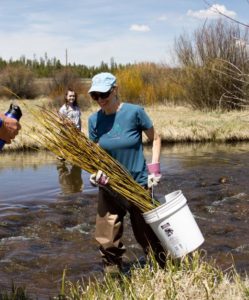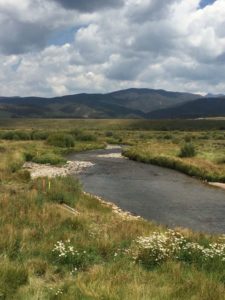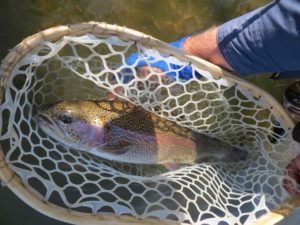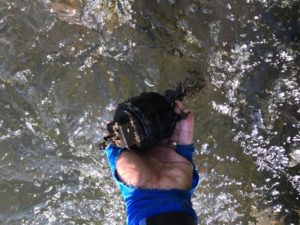Ugly fish. Trash fish. Suckers. Chubs.
A lot of native fish in our rivers don’t get no respect. Many anglers consider them good for nothing, except for throwing back—way back onto the bank.
But we anglers and sportsmen who care about rivers and cutthroats need to adjust our attitude a bit and quit looking down our noses at some of the “other” native fish.
Turns out “trash” fish like Colorado pikeminnow, razorback sucker, humpbacked chub, bonytail and other native species are critically important to river and trout habitat conservation efforts here in the Colorado River Basin and other watersheds in the West.
And trout and other angler-favored species are riding their fintails to a better life.
The pikeminnow has been around for millions of years in the Colorado Basin and can grow up to 6 feet long and live for decades. Pioneers used pitchforks at times, it’s said, to haul them out of the river, they were so abundant. The fish provided food (albeit a bit bony) for the settlers.
But with growing water diversions, drought, invasive species and other factors pressuring the river in the last half century, the numbers of these native fish plummeted, and they were listed under the Endangered Species Act. In 1988, the Upper Colorado River Endangered Fish Recovery Program was launched to bring them and the chubs and suckers back to sustainable numbers.
For three decades, the program has fostered cooperation, rather than conflict, among water users and directed federal and state funds to infrastructure projects that have benefited multiple users, from ranchers and farmers to municipalities.
Trout Unlimited and other conservation groups have supported those efforts, because the water projects, improved infrastructure and enhanced river flows needed to recover pikeminnows, suckers and chubs also benefit upstream coldwater species like trout.
For instance, TU helped upgrade the Relief Ditch and Hartland irrigation diversions on the Gunnison River a few years ago—a project that improved habitat and flows for trout.
The project would not have been possible without funds directly tied to native fish recovery.
Cary Denison, TU’s project coordinator in the Gunnison area, says that many anglers don’t realize that much of the West’s native trout have been removed from their historical ranges, and the remaining “natives” are those fish that many consider to be trash fish.
“If we aim to improve these rivers, we need to leverage the importance of these species to improve trout habitat as well.”
They are some of the original members of that river community, and they belong there. We need all of the pieces of a river ecosystem intact to keep it healthy.
So take a second look at that “trash” fish and give it some serious props for helping improve and restore our rivers for the other fish species we love.
Randy Scholfield is TU’s communications director for the Southwest.
Photo credit: US Fish and Wildlife Service














 The group’s inaugural project at Fraser Flats aimed to restore a roughly one-mile stretch of the Fraser between the towns of Tabernash and Fraser, with the goal of providing healthy habitat for trout even during periods of reduced flows. The Fraser in this section had become too wide and shallow, resulting in sedimentation and high temperatures that smothered bug life and pressured coldwater-loving trout.
The group’s inaugural project at Fraser Flats aimed to restore a roughly one-mile stretch of the Fraser between the towns of Tabernash and Fraser, with the goal of providing healthy habitat for trout even during periods of reduced flows. The Fraser in this section had become too wide and shallow, resulting in sedimentation and high temperatures that smothered bug life and pressured coldwater-loving trout. Colorado Parks and Wildlife conducted a fish survey on Oct. 5, shortly after completion of the project, and found dramatic increases in the biomass of brown and rainbow trout in the stretch compared to previous surveys, and an even larger increase in numbers of larger (14" and up) fish.
Colorado Parks and Wildlife conducted a fish survey on Oct. 5, shortly after completion of the project, and found dramatic increases in the biomass of brown and rainbow trout in the stretch compared to previous surveys, and an even larger increase in numbers of larger (14" and up) fish.


